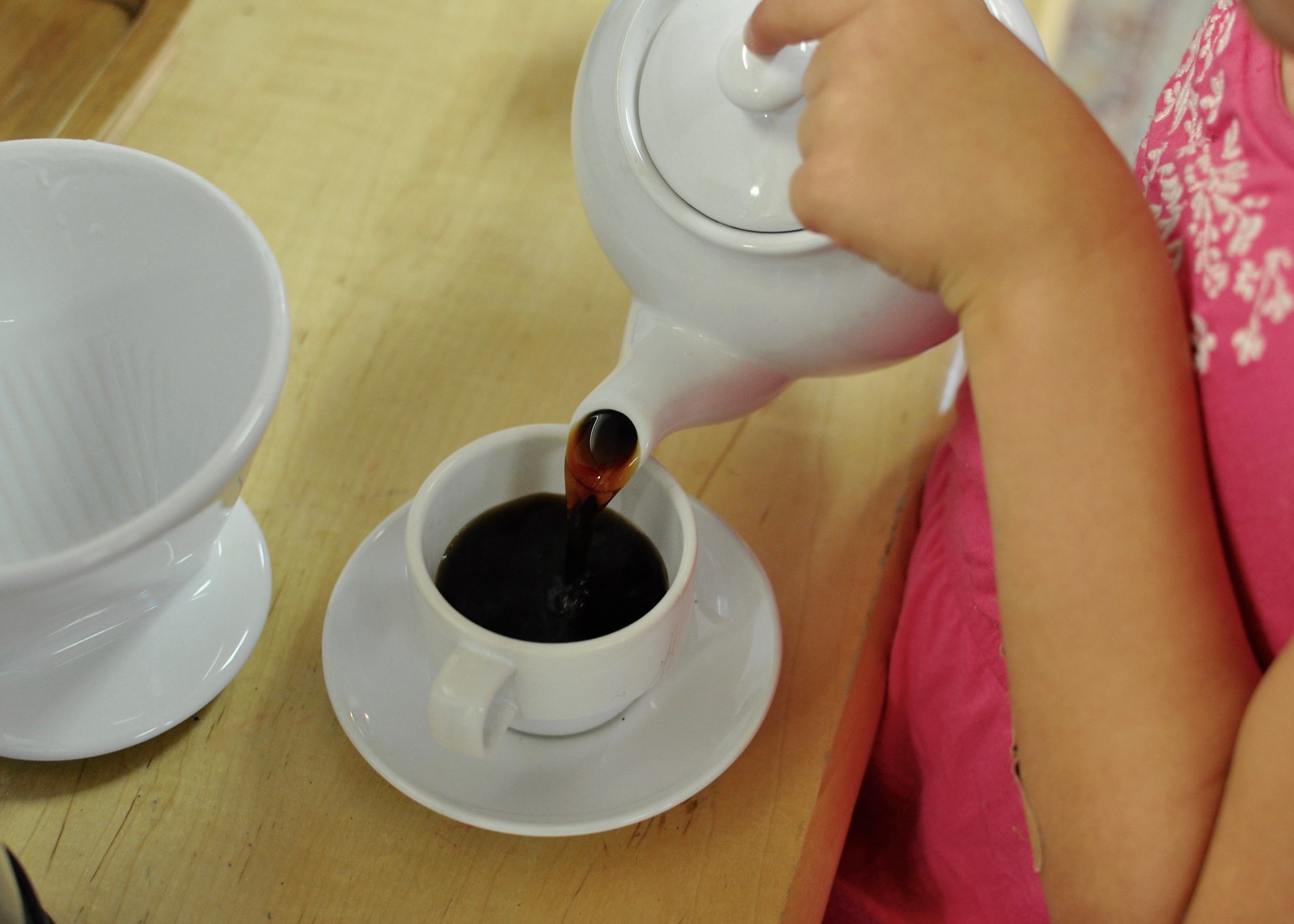Practical Life: Making Coffee- Grace & Courtesy in the Primary Classroom
 There's nothing quite like the smell of freshly ground coffee early in the morning, and thanks to the Montessori work of making coffee, the Directresses and guests of the Primary classroom are treated to these smells of home on a daily basis! If you happen to be a guest in a Primary Montessori classroom early in the morning, don't be surprised if a child approaches you to offer you a fresh cup of coffee - say yes, and observe the hard work and pride that goes into each cup!
There's nothing quite like the smell of freshly ground coffee early in the morning, and thanks to the Montessori work of making coffee, the Directresses and guests of the Primary classroom are treated to these smells of home on a daily basis! If you happen to be a guest in a Primary Montessori classroom early in the morning, don't be surprised if a child approaches you to offer you a fresh cup of coffee - say yes, and observe the hard work and pride that goes into each cup! The grinder itself is an old fashioned hand grinder that was generously donated to the class, and is perfect for learning about simple machinery. It has a small drawer under the grinding mechanism to catch the ground coffee beans. The handle takes some serious wrist and arm strength to operate, so this lesson is often reserved for older Primary children who have built up their strength through other work. It also directly follows the tea making lesson. In Reghan McAuley's Children's House, only one child has been given the coffee lesson; however, that child has given the lesson to three other children on her own. It's an impressive transfer of knowledge, as there are many steps to remember!
The grinder itself is an old fashioned hand grinder that was generously donated to the class, and is perfect for learning about simple machinery. It has a small drawer under the grinding mechanism to catch the ground coffee beans. The handle takes some serious wrist and arm strength to operate, so this lesson is often reserved for older Primary children who have built up their strength through other work. It also directly follows the tea making lesson. In Reghan McAuley's Children's House, only one child has been given the coffee lesson; however, that child has given the lesson to three other children on her own. It's an impressive transfer of knowledge, as there are many steps to remember!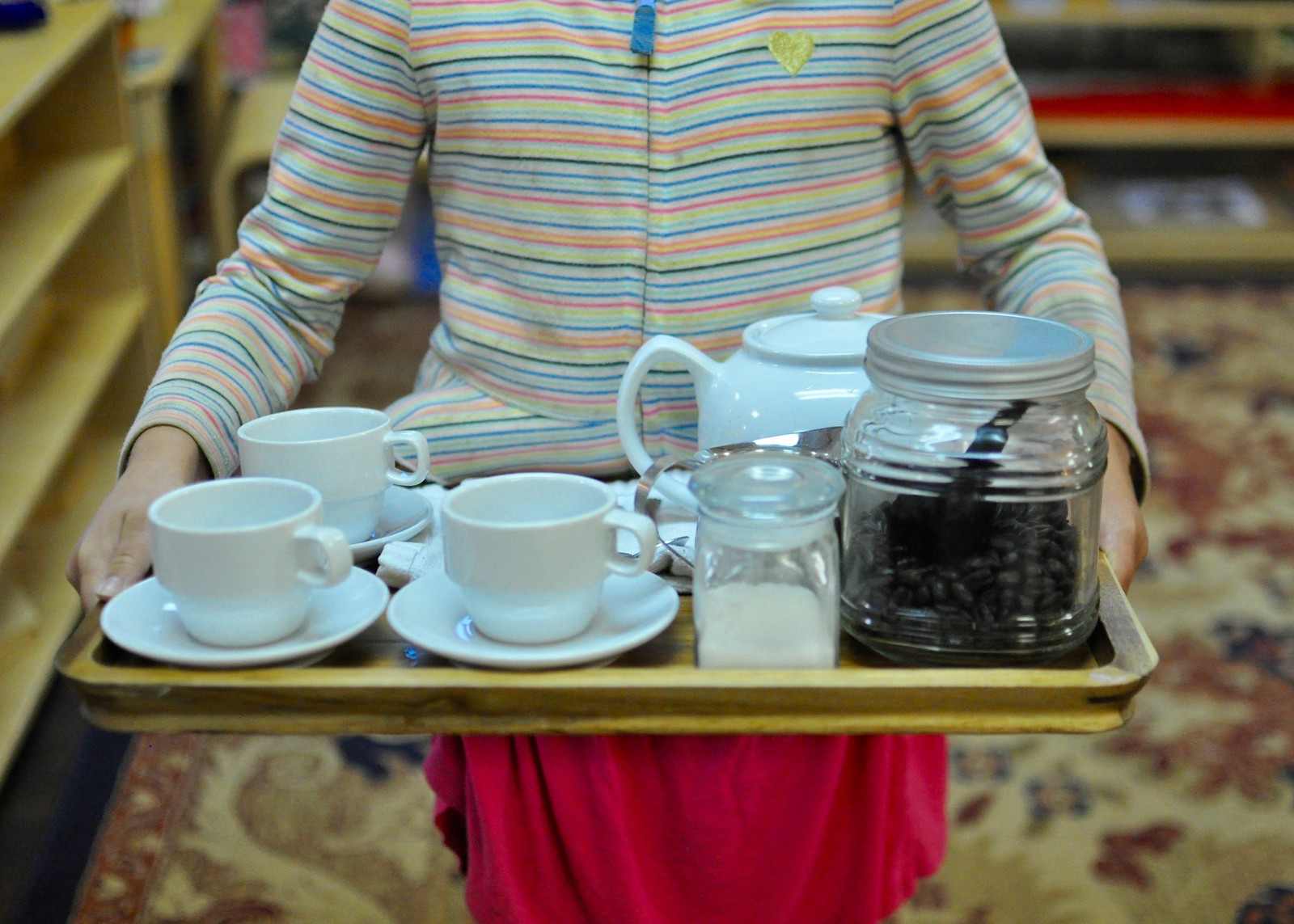
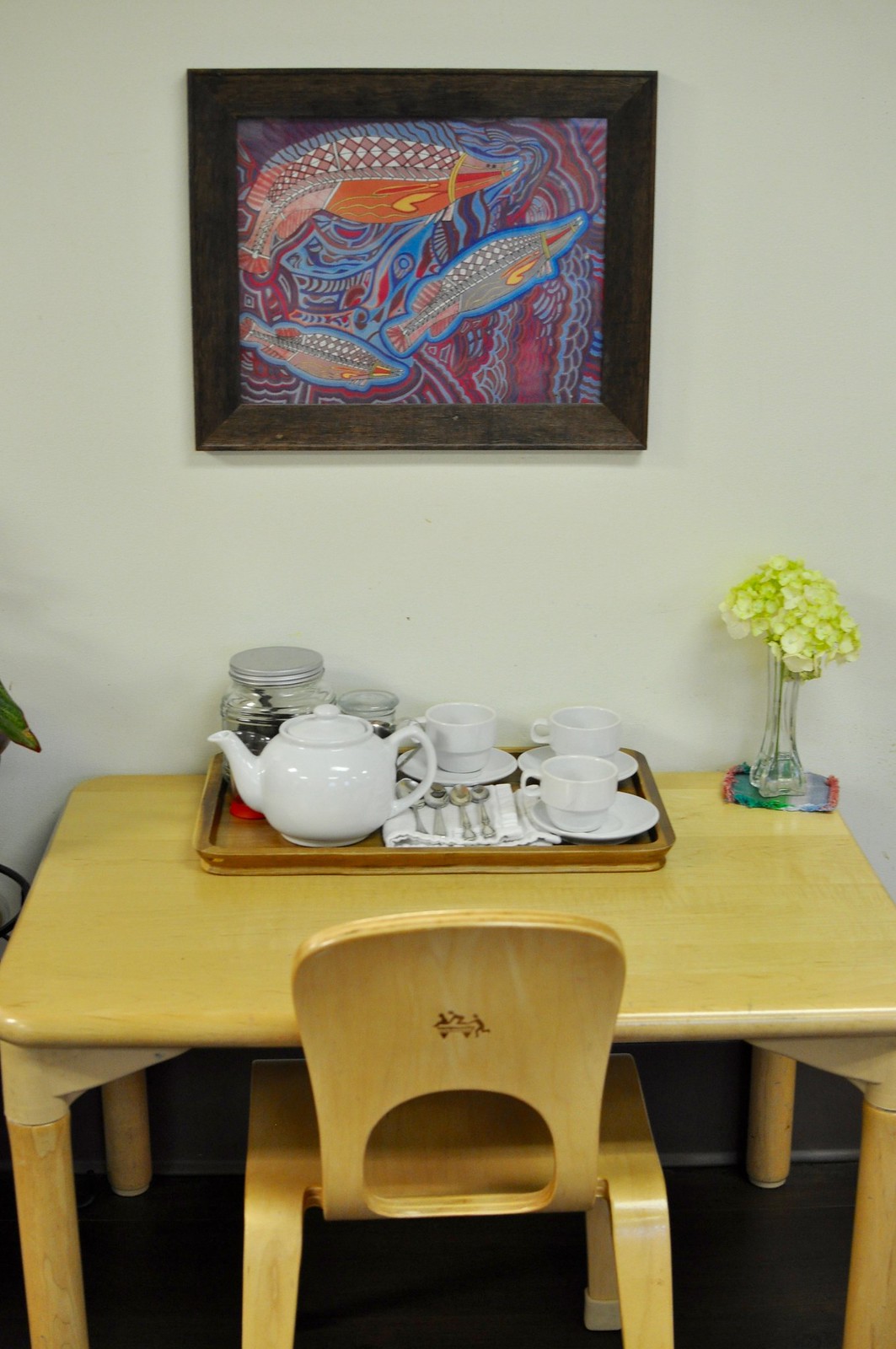
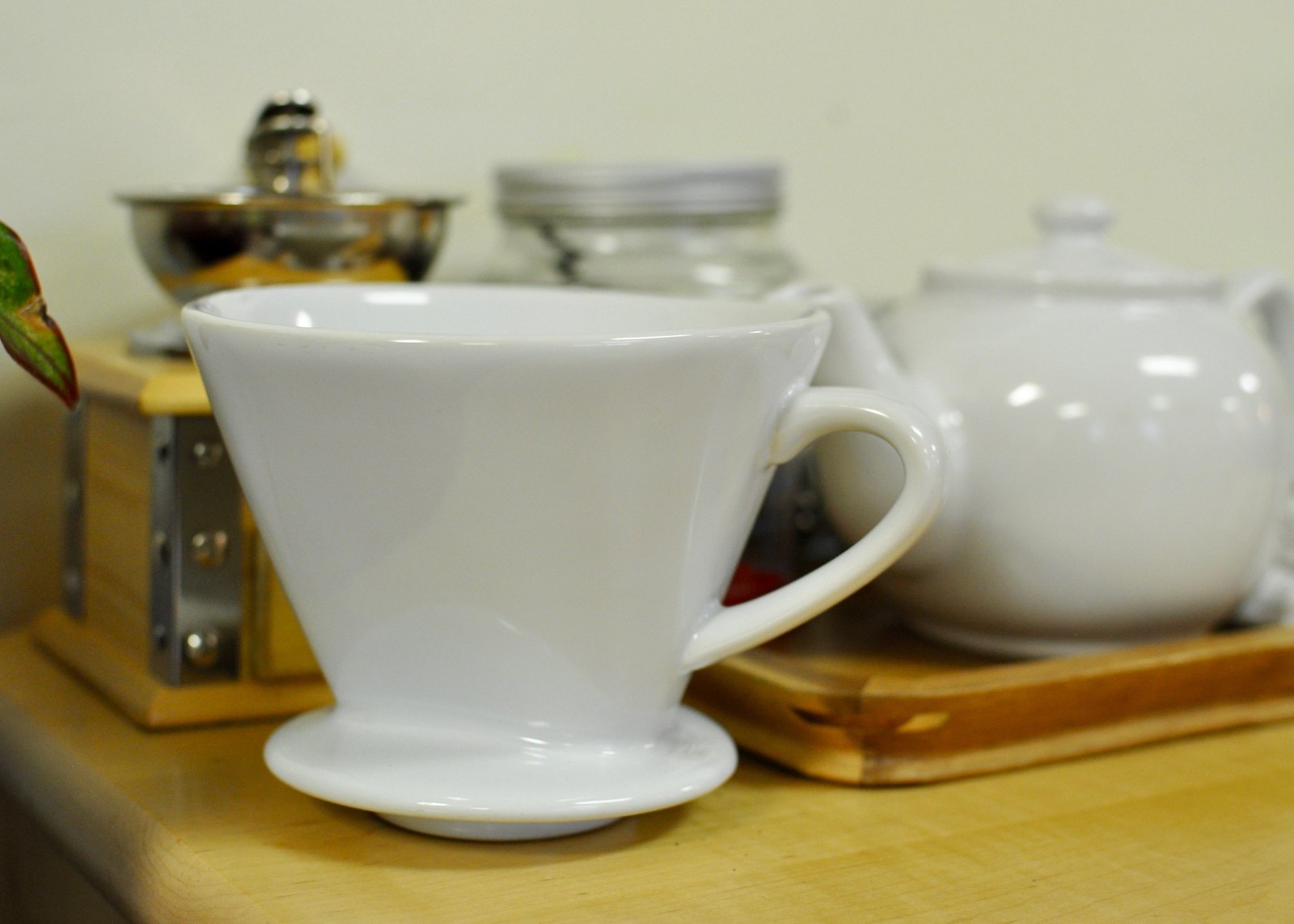
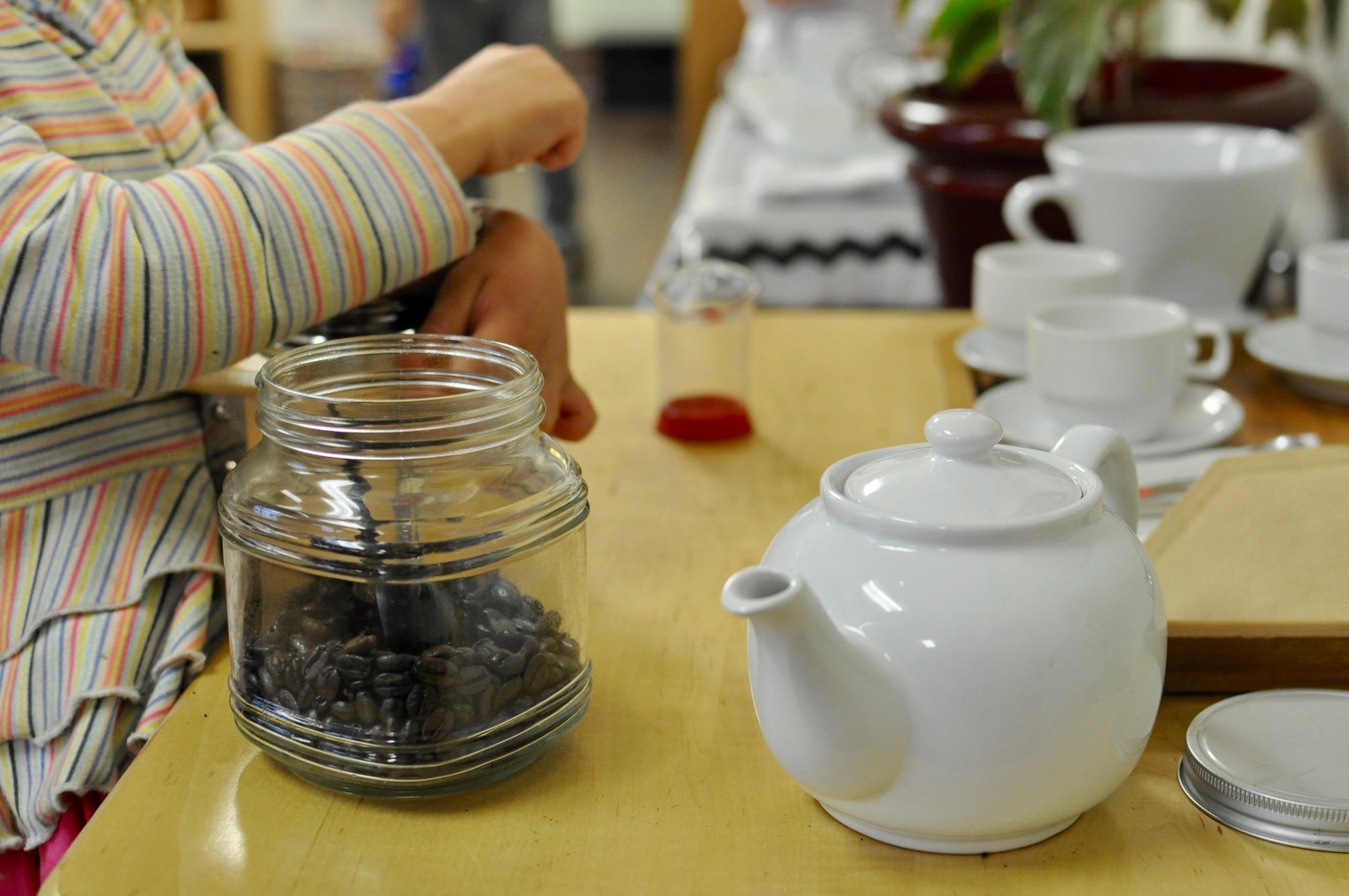 The child begins by setting up all of the necessary items and choosing a safe spot to work. After grinding the beans, the child removes the little wooden drawer, dumps the ground coffee into a jar, and replaces the drawer in the grinder.
The child begins by setting up all of the necessary items and choosing a safe spot to work. After grinding the beans, the child removes the little wooden drawer, dumps the ground coffee into a jar, and replaces the drawer in the grinder.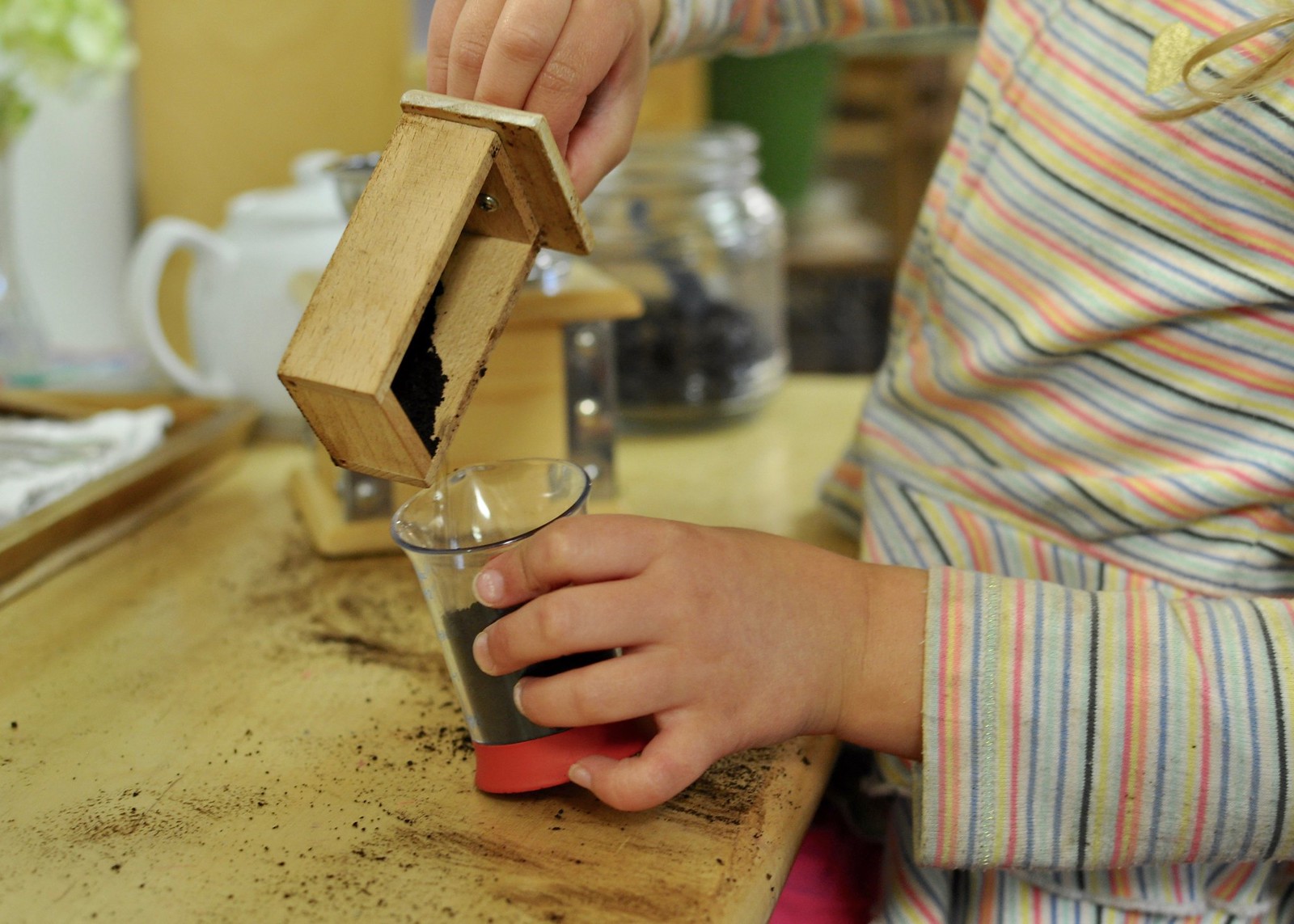
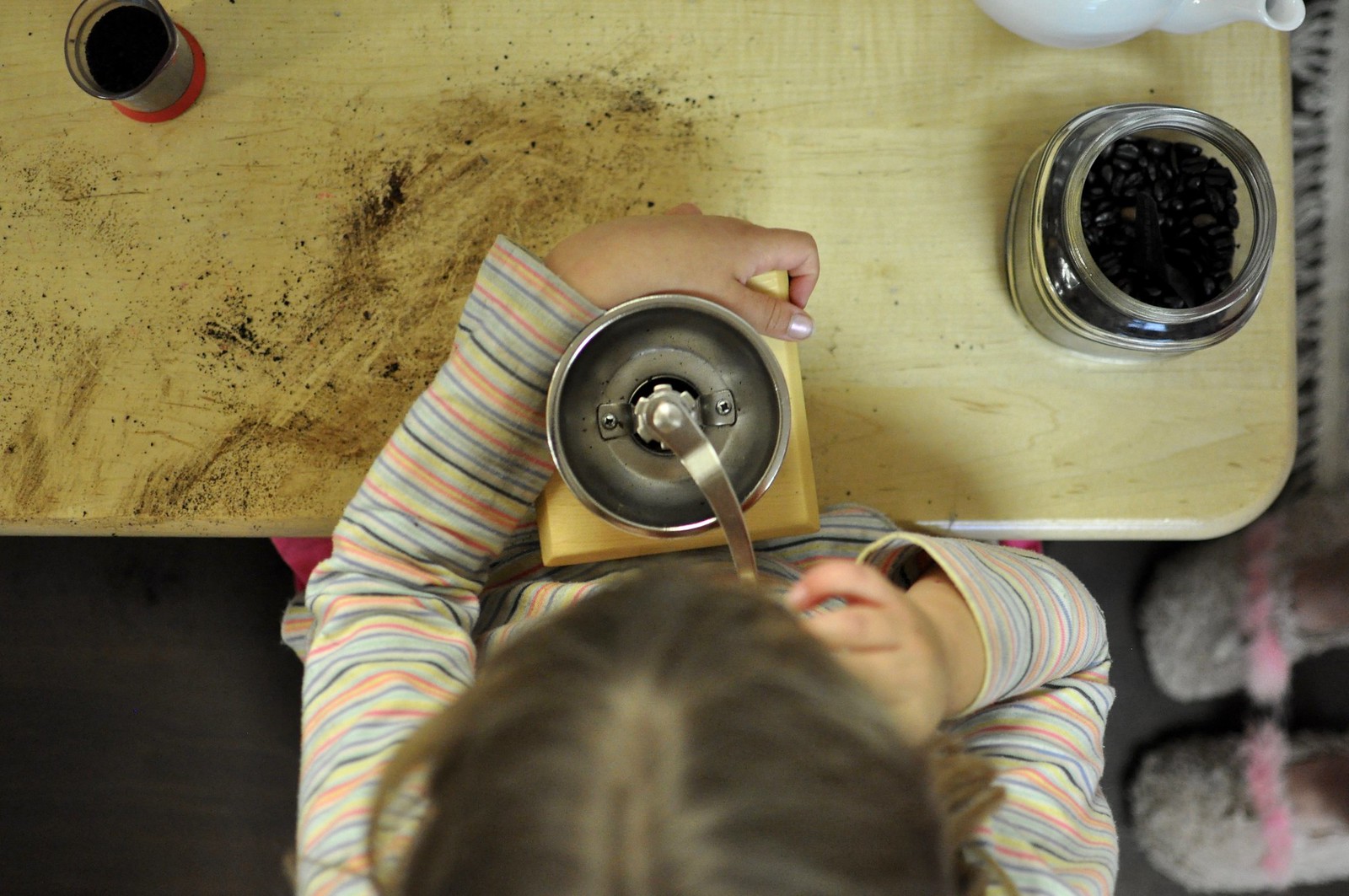 This process must occur over and over again, until the desired amount of grounds is measured (in this case, enough for three small cups of strong coffee: one for the Directress, one for the Assistant, and one for the guest/photographer!). Above, the child's left hand and wrist grip tightly around the base of the grinder to hold it steady while the right hand grinds."I like to use my right arm to grind. My left is too hard," she explains, after demonstrating the difference between doing it left-handed versus right-handed.The next step requires the child to boil water. This is done safely with the use of a glass electric tea kettle. The child flips a switch on the side, then goes to clean up the spilled grounds while she waits a few minutes for the water to boil.
This process must occur over and over again, until the desired amount of grounds is measured (in this case, enough for three small cups of strong coffee: one for the Directress, one for the Assistant, and one for the guest/photographer!). Above, the child's left hand and wrist grip tightly around the base of the grinder to hold it steady while the right hand grinds."I like to use my right arm to grind. My left is too hard," she explains, after demonstrating the difference between doing it left-handed versus right-handed.The next step requires the child to boil water. This is done safely with the use of a glass electric tea kettle. The child flips a switch on the side, then goes to clean up the spilled grounds while she waits a few minutes for the water to boil.
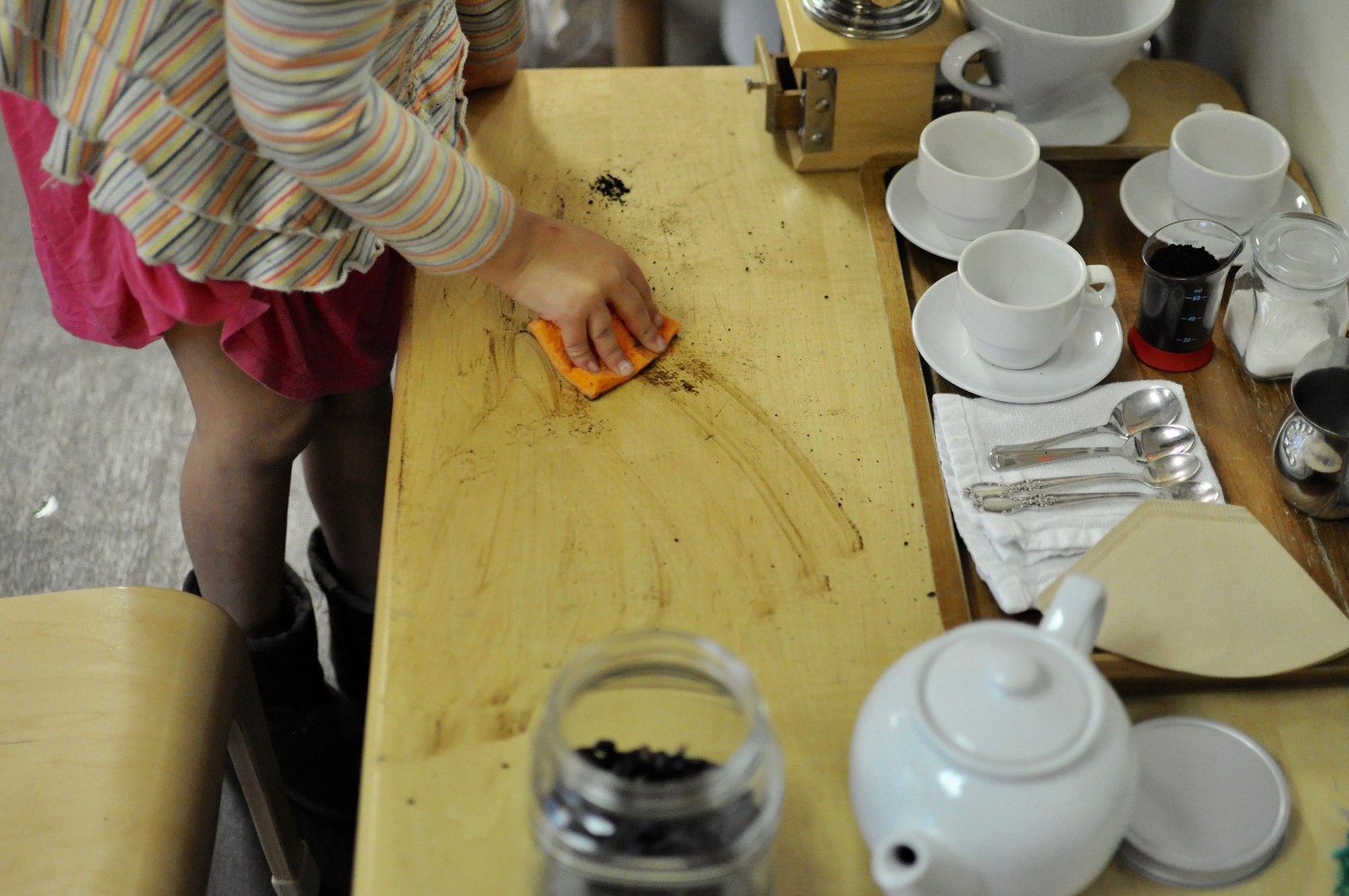
 She also prepares the coffee filter while she waits. When the water is boiling, she notifies the Assistant, who pours the water into a glass receptacle with a lid, for safety. The child is extremely careful and aware of younger children around her, gently warning them to stay back from the hot water on the table where she works.
She also prepares the coffee filter while she waits. When the water is boiling, she notifies the Assistant, who pours the water into a glass receptacle with a lid, for safety. The child is extremely careful and aware of younger children around her, gently warning them to stay back from the hot water on the table where she works.
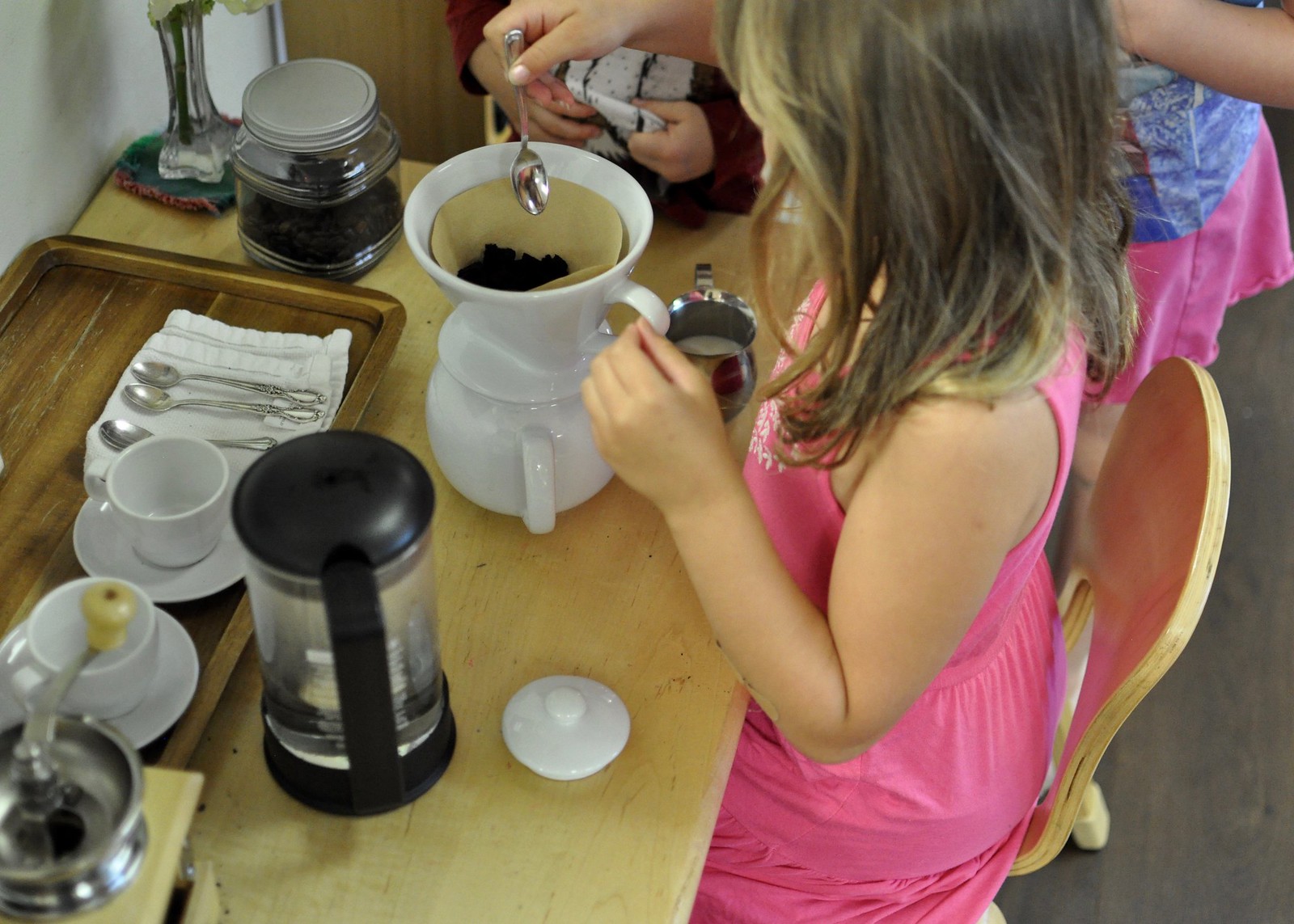
 A major tenant of the Montessori method is teaching and modeling Grace and Courtesy. This includes placing great emphasis on social interactions and thinking of others. In making coffee, the child does so partly for the joy of the work that makes her feel grown up and important, but she also engages in the work knowing that she cannot drink the coffee herself; rather, she makes it for the adults in the room.In this case, the child shares with with great pride her knowledge of how the other adults take their coffee. Without asking, she knows who likes it black and who prefers three spoonfuls of sugar and just a dash of milk! Serving food or drinks to others is a way of showing your care and respect for those around you. This type of work and mindset carry over into many real-world situations outside the classroom: holding the door for a stranger, greeting others, using quiet voices in quiet spaces, etc."Grace and Courtesy lessons give the child the vocabulary, actions, and steps required for him to build his awareness and responsiveness of those around him. This in turn gives the child a better sense of orientation in his social structure." -Montessori Primary Guide
A major tenant of the Montessori method is teaching and modeling Grace and Courtesy. This includes placing great emphasis on social interactions and thinking of others. In making coffee, the child does so partly for the joy of the work that makes her feel grown up and important, but she also engages in the work knowing that she cannot drink the coffee herself; rather, she makes it for the adults in the room.In this case, the child shares with with great pride her knowledge of how the other adults take their coffee. Without asking, she knows who likes it black and who prefers three spoonfuls of sugar and just a dash of milk! Serving food or drinks to others is a way of showing your care and respect for those around you. This type of work and mindset carry over into many real-world situations outside the classroom: holding the door for a stranger, greeting others, using quiet voices in quiet spaces, etc."Grace and Courtesy lessons give the child the vocabulary, actions, and steps required for him to build his awareness and responsiveness of those around him. This in turn gives the child a better sense of orientation in his social structure." -Montessori Primary Guide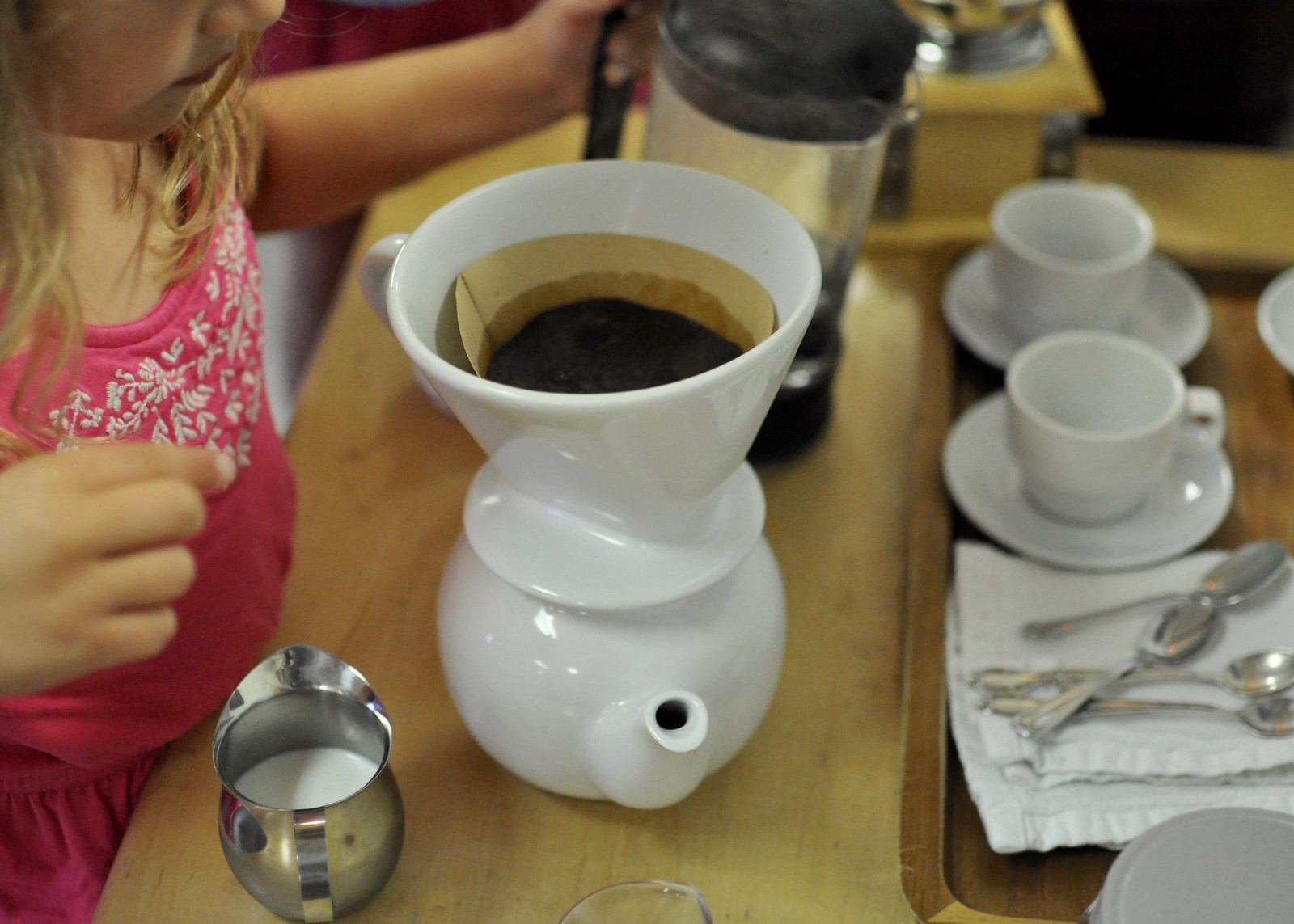

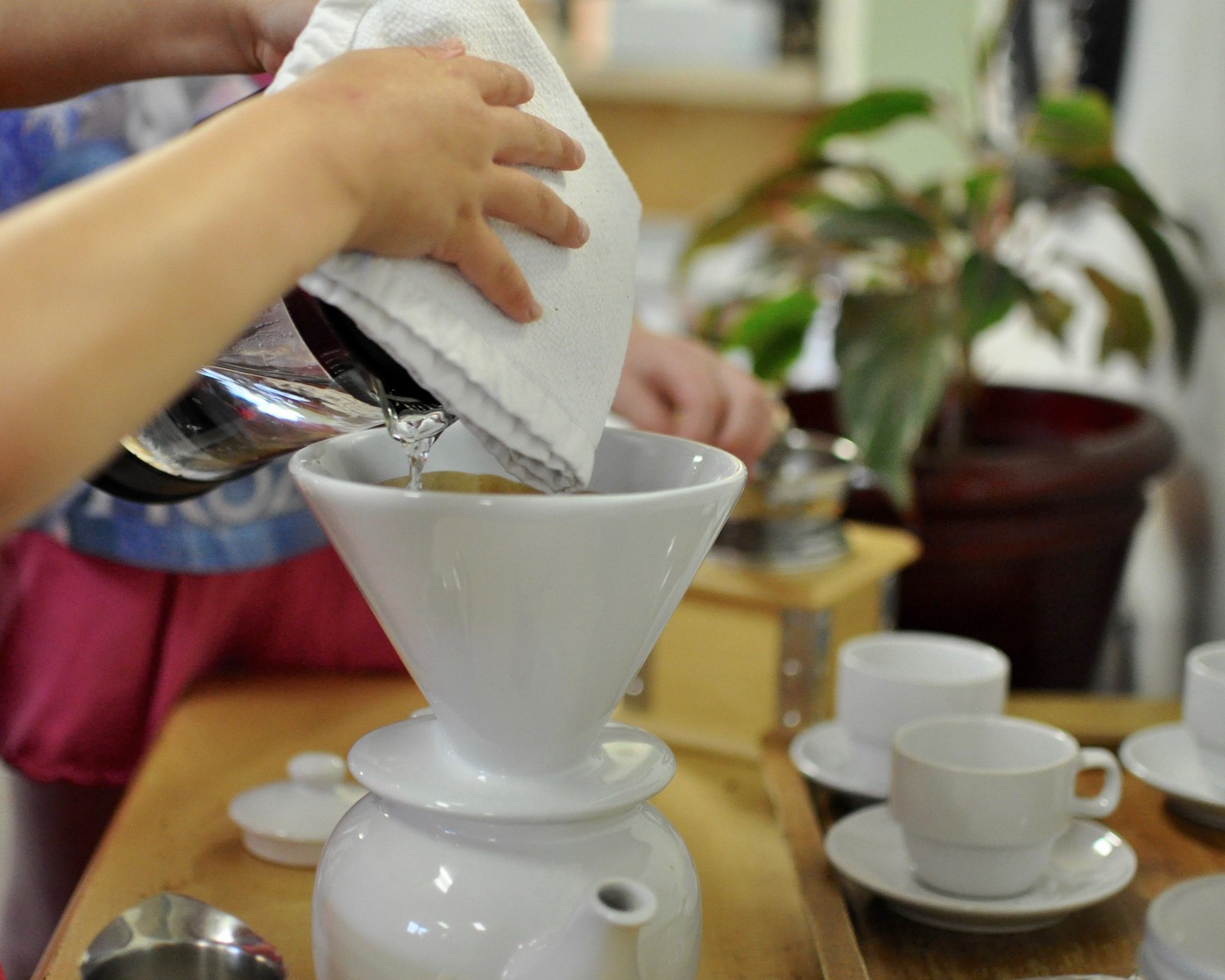
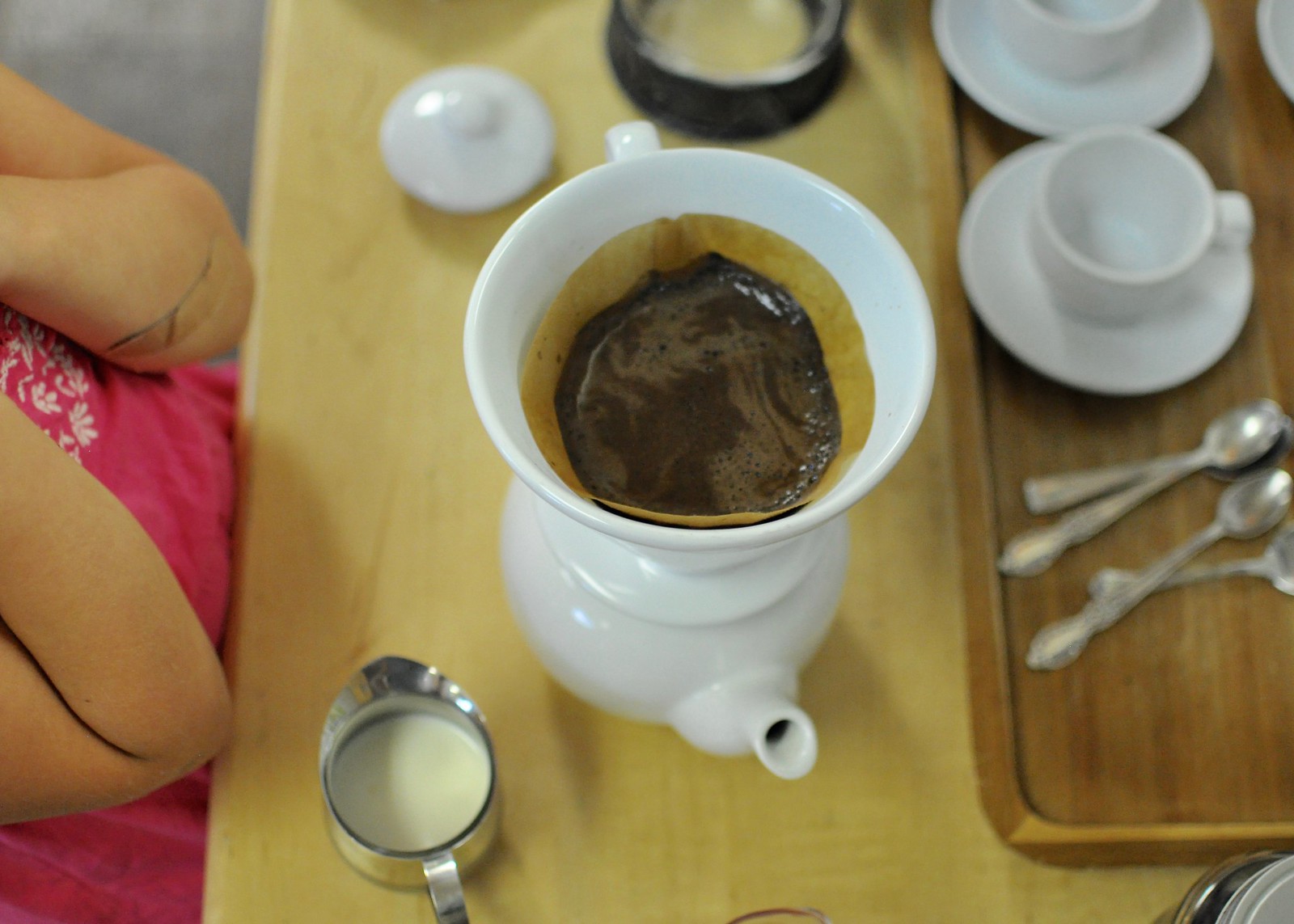
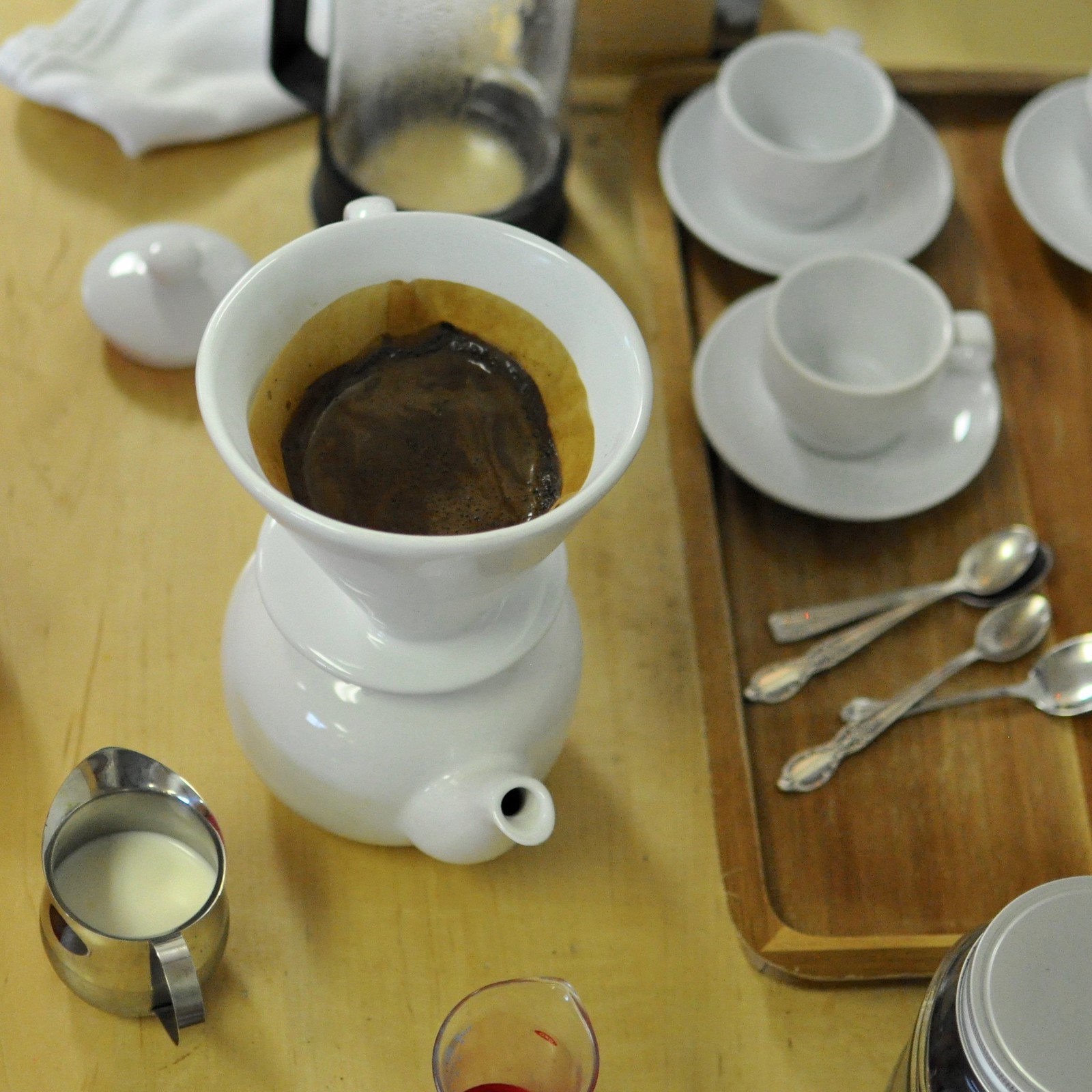
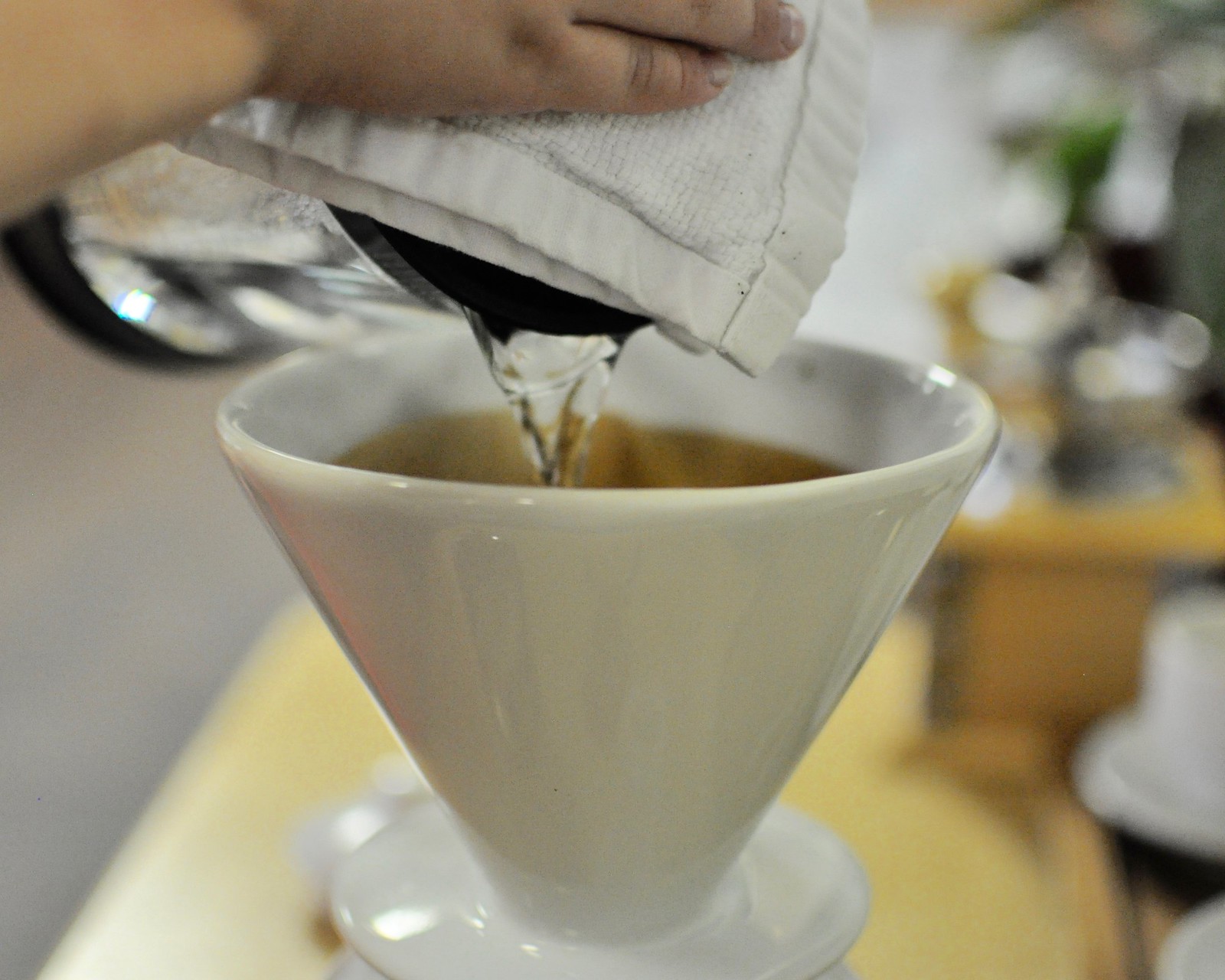 The tenets of grace and courtesy extend into the wider community from this moment on. They begin early, in treating others with respect and dignity, and move on to thinking of others and prioritizing their needs. Eventually, as the child grows, this service aspect extends to all parts of her life, as an integral part of how human beings should treat one another. It's a huge part of being a social creature, and one that cannot be ignored during the school day.
The tenets of grace and courtesy extend into the wider community from this moment on. They begin early, in treating others with respect and dignity, and move on to thinking of others and prioritizing their needs. Eventually, as the child grows, this service aspect extends to all parts of her life, as an integral part of how human beings should treat one another. It's a huge part of being a social creature, and one that cannot be ignored during the school day.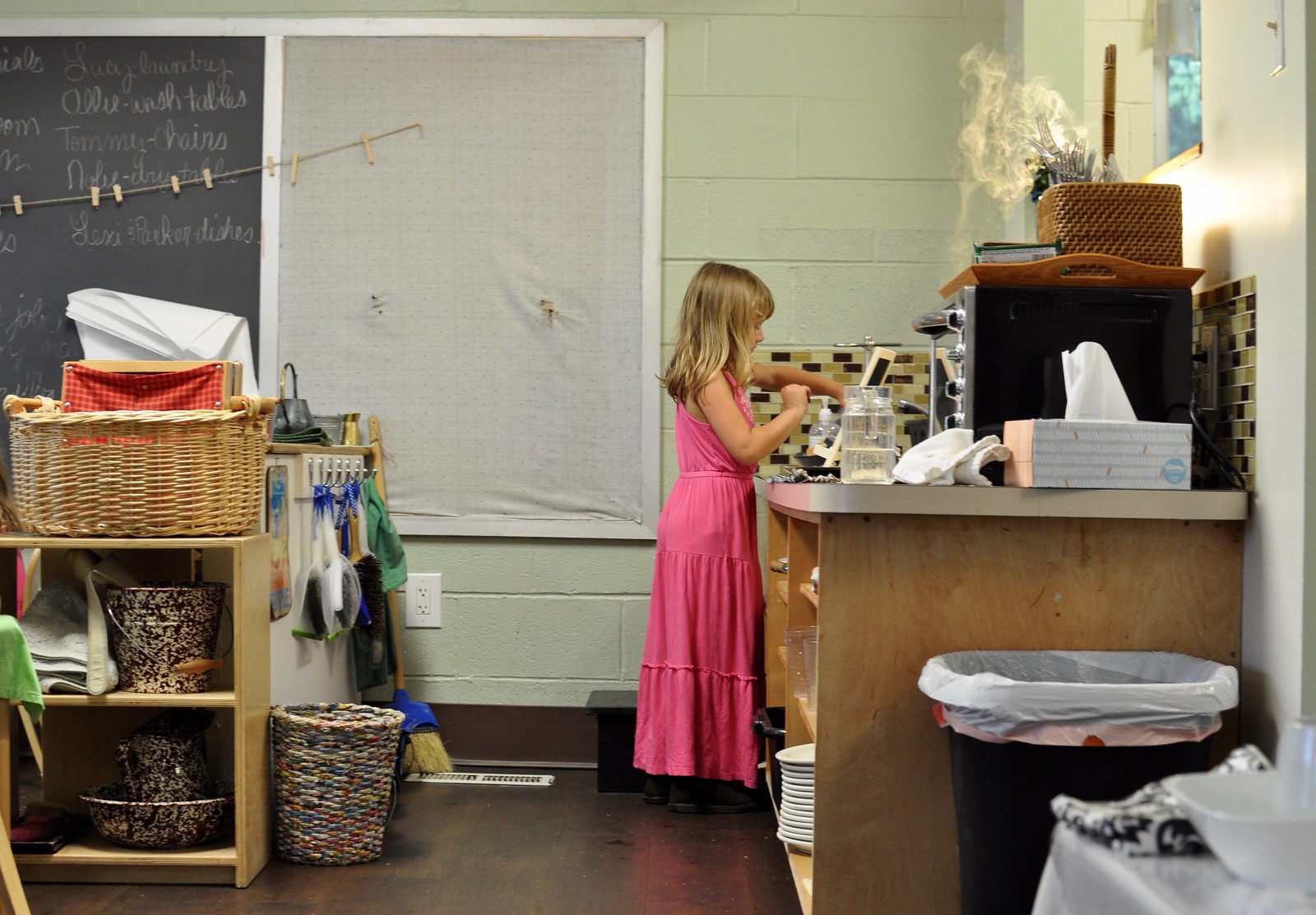
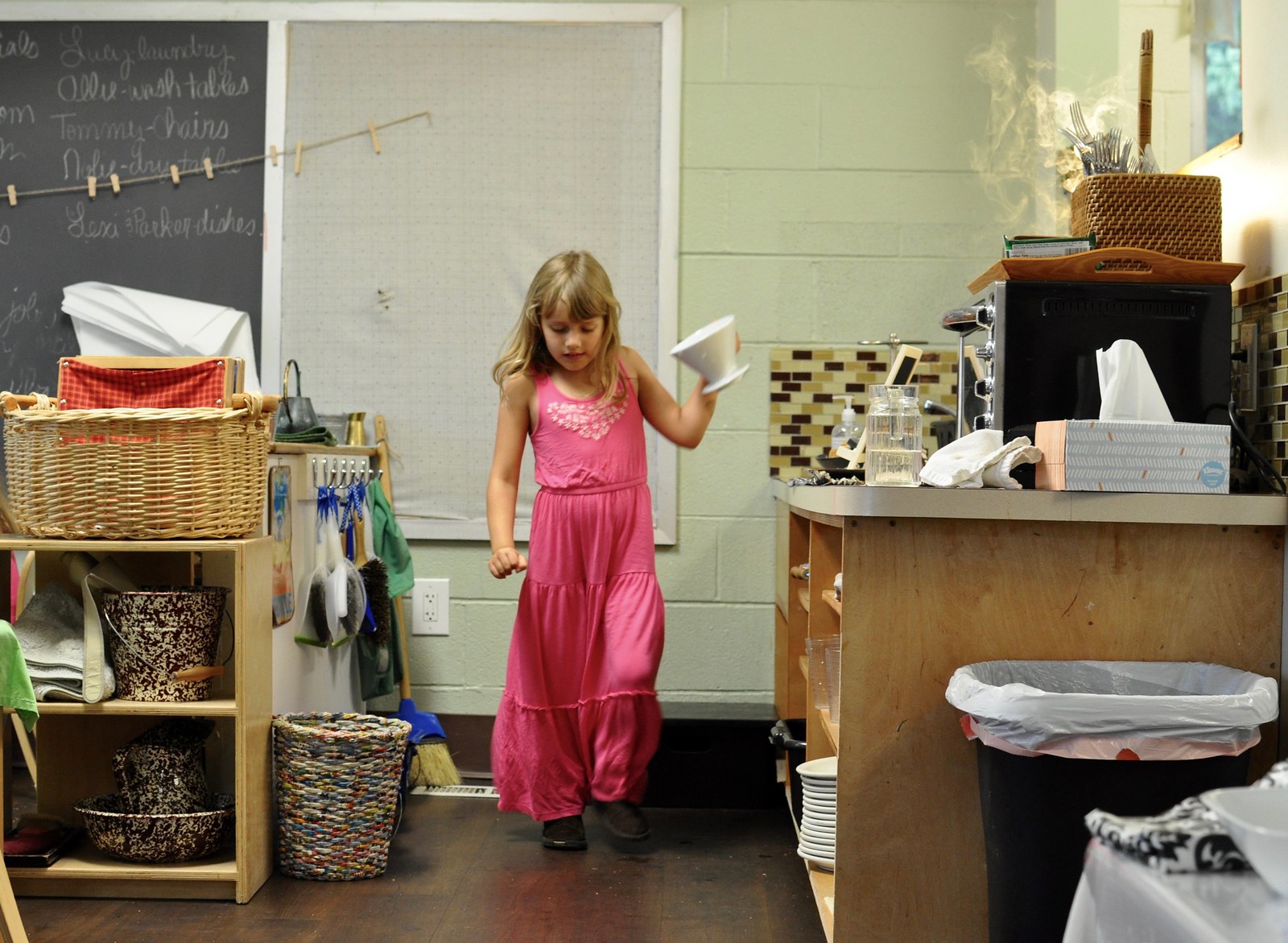 "It is interesting to see how little by little, these [children] become aware of forming a community which behaves as such… Once they have reached this level, the children no longer act thoughtlessly, but put the group first and try to succeed for its benefit." -Dr. Maria Montessori, The Absorbent Mind
"It is interesting to see how little by little, these [children] become aware of forming a community which behaves as such… Once they have reached this level, the children no longer act thoughtlessly, but put the group first and try to succeed for its benefit." -Dr. Maria Montessori, The Absorbent Mind